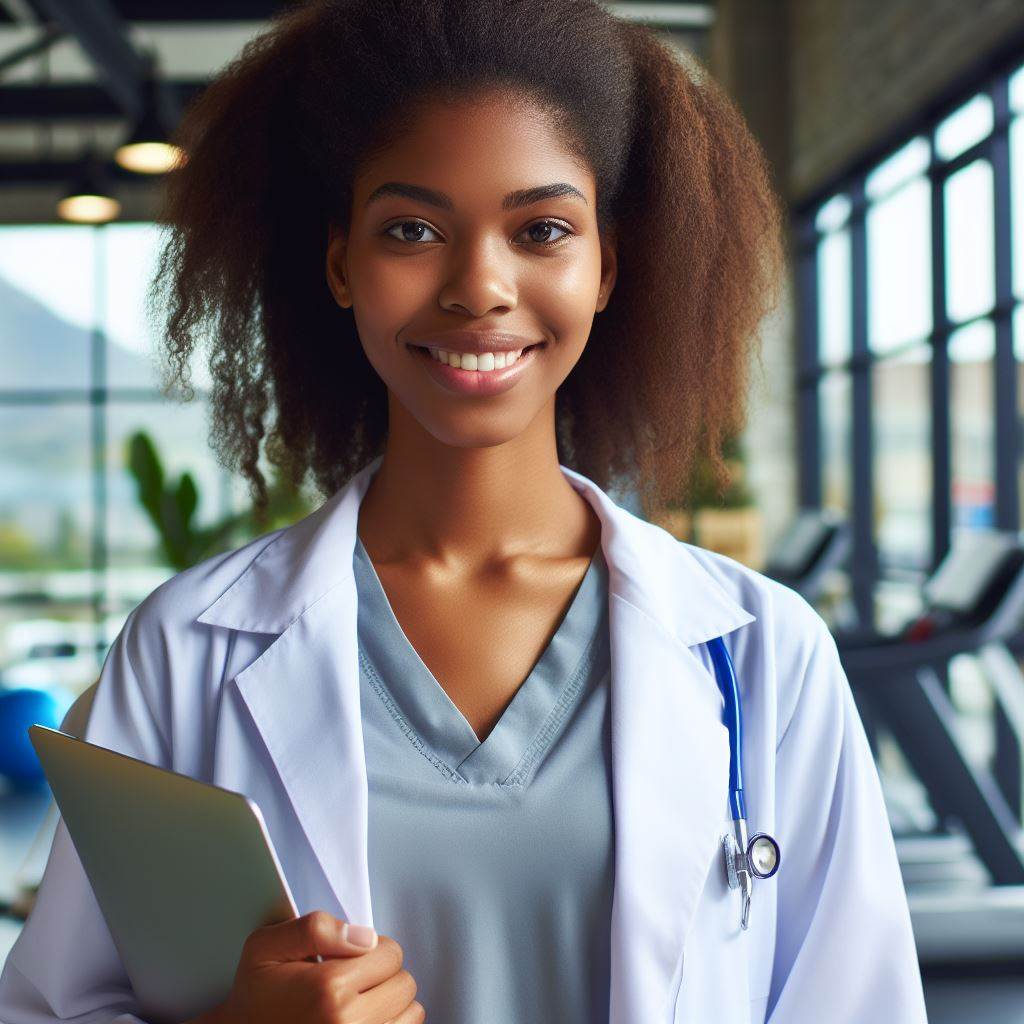Introduction
Physical education plays a vital role in schools, promoting overall health and well-being.
Effective teaching techniques and strategies are crucial in ensuring students engage and learn effectively.
Physical education not only improves physical fitness but also enhances cognitive skills.
It promotes teamwork, sportsmanship, and leadership qualities among students.
Effective teaching techniques help students understand the importance of physical activity.
Varied strategies cater to different learning styles and keep students engaged.
Implementing innovative methods fosters a love for physical activity and promotes lifelong fitness habits.
Understanding the importance of physical education
Physical education plays a crucial role in the development of students, offering a wide array of benefits beyond just physical fitness.
Benefits of physical education for students
- Overall Health and Well-being: Physical education helps students stay active, promoting good physical health by reducing the risk of obesity, diabetes, and other health issues.
- Improved Academic Performance: Regular physical activity has been linked to enhanced cognitive function and improved focus, leading to better academic performance.
- Social Skills Development: Through team sports and cooperative activities, students learn valuable social skills like teamwork, communication, and leadership.
How physical education can improve academic performance and social skills
- Increased Focus and Concentration: Engaging in physical activity helps improve blood flow to the brain, enhancing cognitive function and concentration levels.
- Enhanced Problem-solving Skills: Sports and physical challenges require students to think on their feet, fostering quick decision-making and problem-solving abilities.
- Teamwork and Communication: Collaborative activities in physical education classes encourage students to work together, communicate effectively, and build trust among peers.
- Leadership Development: Taking on leadership roles in team settings helps students develop leadership qualities, including decision-making, motivation, and responsibility.
Overall, physical education is essential for promoting a healthy lifestyle, improving academic performance, and nurturing vital social skills among students.
It is not just about physical fitness but also about holistic development.
Read: Health Education Programs in Nigerian Universities
Incorporating variety in lessons
When it comes to teaching physical education, incorporating a variety of activities is essential.
Not only does it keep the students engaged and interested, but it also helps in developing a well-rounded physical education program.
Different types of physical activities that can be included in physical education classes
It is important to introduce students to a diverse range of physical activities such as team sports, individual sports, and recreational activities.
By exposing students to various activities, you can help them discover their interests and strengths in different areas of physical education.
Including activities like basketball, soccer, yoga, dance, and swimming can cater to different preferences among students.
Incorporating both competitive and non-competitive activities ensures that all students have opportunities to participate and excel in their own way.
Additionally, including activities that focus on different aspects of fitness such as strength training, flexibility, and endurance can contribute to the overall physical development of students.
Importance of keeping lessons engaging and fun for students
Keeping lessons engaging and fun is crucial in order to maintain student interest and participation.
By incorporating variety in lessons, you can prevent boredom and monotony, making physical education classes enjoyable for students.
Engaging activities help in boosting motivation and enthusiasm among students, leading to better overall performance and learning outcomes.
Fun activities create a positive learning environment where students feel comfortable, confident, and eager to participate in physical education classes.
Incorporating elements of play, teamwork, and friendly competition can also enhance the social and emotional development of students.
In fact, incorporating a variety of physical activities in lessons and keeping them engaging and fun are key strategies in physical education teaching.
This approach not only helps in promoting physical fitness and skills development but also fosters a positive attitude towards an active and healthy lifestyle among students.
Remember, variety is the spice of life, and the same holds true for physical education classes!
Utilizing technology in physical education
Technology has become an integral part of modern physical education, offering innovative ways to enhance learning and engagement.
Below are some key points on how technology plays a crucial role in teaching physical education:
Role of Technology in Enhancing Physical Education Lessons
- Technology helps in creating interactive and engaging lessons for students.
- It provides access to a wide range of resources, including videos, tutorials, and interactive games.
- Virtual reality and augmented reality technologies can simulate real-world scenarios for students to experience.
- Online platforms and software enable teachers to track student progress and provide personalized feedback.
- Technology encourages collaborative learning opportunities among students through online platforms and forums.
Use of Fitness Trackers, Apps, and Online Resources in Teaching Physical Education
- Fitness trackers help students monitor their physical activity levels and set personal fitness goals.
- Apps like Strava, Nike Training Club, and MapMyFitness provide workout ideas and tracking features for students.
- Students can access online resources for fitness routines, nutrition guidance, and health tips.
- Virtual coaching platforms allow students to receive personalized workout plans and guidance from professionals.
- Teachers can use fitness tracking data to assess student performance and create personalized fitness plans.
In essence, technology offers endless possibilities for enhancing physical education lessons, providing students with interactive learning experiences and personalized feedback.
By incorporating fitness trackers, apps, and online resources, teachers can create a dynamic and engaging learning environment that promotes physical activity and overall well-being.
Read: Role of Physical Education in Nigerian Schools
Implementing effective communication strategies
Implementing effective communication strategies in physical education teaching is crucial for creating a positive and engaging learning environment.
Clear communication between teachers and students is essential for ensuring that instructions are understood and expectations are met.
Importance of Clear Communication
- Clear communication helps students better understand the objectives of each lesson.
- It minimizes misunderstandings and confusion, leading to improved learning outcomes.
- Students feel more supported and engaged when they know what is expected of them.
Techniques for Providing Feedback
- Timely feedback is essential for students to track their progress and make necessary improvements.
- Use positive reinforcement to acknowledge students’ efforts and motivate them to perform better.
- Provide constructive criticism in a respectful manner to help students grow and develop their skills.
- Encourage peer-to-peer feedback to promote collaboration and create a supportive learning community.
Encouragement during Physical Education Classes
- Celebrate small victories and progress to boost students’ confidence and self-esteem.
- Use motivational quotes or stories to inspire students and foster a positive mindset.
- Set achievable goals and provide encouragement as students work towards accomplishing them.
- Create a supportive and inclusive atmosphere where students feel empowered to take risks and challenge themselves.
Overall, effective communication, feedback, and encouragement play a significant role in enhancing the teaching and learning experience in physical education classes.
By implementing these strategies, teachers can create a positive and stimulating environment that promotes student growth and success.
Read: Challenges in Physical and Health Education in Nigeria

Creating inclusive and adaptive lesson plans
Importance of accommodating students with diverse abilities in physical education classes
Ensuring that all students have the opportunity to participate and succeed in physical education is crucial.
By creating inclusive lesson plans, educators can create an environment where every student feels valued and empowered to participate in physical activities.
This not only promotes physical fitness but also helps in the overall development of students.
Strategies for modifying activities to meet the needs of all students
- Differentiation: Implementing differentiation strategies allows educators to modify activities based on individual student needs.
This could include adjusting the level of difficulty, providing additional support, or offering alternative activities to ensure that all students can participate and succeed. - Use of equipment and technology: Utilizing specialized equipment or technology can help students with diverse abilities engage in physical activities.
For example, using adaptive equipment like wheelchairs or modified sports equipment can make it easier for students with physical disabilities to participate. - Peer support and collaboration: Encouraging peer support and collaboration can create a supportive environment where students help and learn from each other.
Pairing students with different abilities together can promote teamwork and cooperation while providing additional support for those who may need it. - Providing options and choices: Offering students a variety of options and choices within an activity can cater to their individual preferences and abilities.
This allows students to choose activities that best suit their needs and interests, ultimately leading to a more inclusive and engaging learning experience. - Continuous assessment and feedback: Regularly assessing student progress and providing feedback can help educators adjust lesson plans accordingly.
By monitoring individual student performance, educators can tailor activities to address specific needs and ensure that all students are able to participate and progress.
In short, creating inclusive and adaptive lesson plans in physical education is essential for accommodating students with diverse abilities.
Transform Your Career with Expert Guidance
Get personalized mentorship consulting that’s tailored to your unique path. Our expert advice is actionable and exclusive.
Get StartedBy implementing strategies such as differentiation, the use of equipment and technology, peer support, providing options and choices, and continuous assessment and feedback, educators can ensure that all students have the opportunity to participate and succeed in physical education classes.
This not only promotes inclusivity but also fosters a positive and supportive learning environment for all students.
Learn More: Community Impact of Agricultural Science Education
Promoting teamwork and collaboration
Teamwork and collaboration are essential aspects of physical education classes.
They provide numerous benefits for students and help create a positive learning environment.
Here are some key points to consider when promoting teamwork and collaboration in PE:
Benefits of Teamwork in Physical Education Classes
- Encourages Social Interaction: Teamwork promotes social skills such as communication, cooperation, and respect for others.
- Builds Leadership Skills: Working in teams allows students to take on leadership roles, delegate tasks, and contribute to group success.
- Enhances Problem-Solving Abilities: Collaborating with peers enables students to brainstorm solutions, think critically, and overcome obstacles together.
- Fosters a Sense of Belonging: Being part of a team creates a sense of belonging and camaraderie, which can boost self-esteem and confidence.
Strategies for Promoting Collaboration and Communication
- Group Activities: Assigning group projects or team sports activities encourages collaboration among students.
- Peer Evaluation: Implement peer evaluations to provide feedback on teamwork skills and promote accountability within the group.
- Communication Exercises: Incorporate communication exercises like partner drills or group discussions to improve verbal and non-verbal communication skills.
- Team-Building Games: Organize team-building games and challenges that require students to work together to achieve a common goal.
- Role Assignments: Assign roles within the team such as captain, timekeeper, or facilitator to promote teamwork and shared responsibility.
- Reflective Discussions: Encourage students to reflect on their teamwork experiences and identify strengths, areas for improvement, and lessons learned.
- Positive Reinforcement: Recognize and reward teamwork efforts through praise, certificates, or other forms of positive reinforcement.
- Encourage Peer Support: Promote a supportive environment where students help and encourage each other, fostering a sense of teamwork and collaboration.
In general, teamwork and collaboration play a vital role in physical education classes by enhancing social skills, leadership abilities, problem-solving skills, and a sense of belonging.
By implementing strategies that promote collaboration and communication, educators can create a positive and engaging learning environment that benefits students both academically and socially.
Read: Benefits of Studying Physical and Health Education
Incorporating goal setting and reflection
Incorporating goal setting and reflection in physical education teaching is essential for student growth and progress.
Setting specific goals helps students stay motivated and focused on improving their fitness levels, while reflection allows them to track their progress and adjust their strategies accordingly.
Importance of setting goals and reflecting on progress
Setting goals in physical education provides students with a sense of direction and purpose.
It gives them something to strive for and challenges them to push themselves beyond their limits.
By setting specific, measurable, attainable, relevant, and time-bound (SMART) goals, students can track their progress and celebrate their achievements along the way.
Benefits of setting goals in physical education
- Increased motivation and focus
- Improved self-discipline and determination
- Enhanced sense of accomplishment
- Better time management and prioritization skills
- Clearer understanding of personal strengths and weaknesses
Reflection on progress
Reflection is the process of looking back on one’s achievements, setbacks, and experiences to gain insights and learn from them.
In physical education, reflection plays a crucial role in helping students understand their strengths and areas for improvement.
It allows them to identify what worked well for them and what they need to change to reach their goals.
Techniques for helping students set and achieve personal fitness goals
As physical education teachers, providing students with the tools and guidance they need to set and achieve personal fitness goals is crucial.
Here are some techniques to help students in this process:
- Assess student fitness levels: Before setting goals, it’s essential to assess where students currently stand in terms of fitness.
Conducting fitness tests and evaluations can help determine their strengths and areas for improvement. - Collaboratively set SMART goals: Encourage students to set SMART goals that are specific, measurable, attainable, relevant, and time-bound.
Work with them to break down long-term goals into smaller, manageable tasks. - Create personalized fitness plans: Based on students’ goals and fitness levels, create personalized fitness plans that include a mix of cardio, strength training, flexibility, and balance exercises.
Tailor the plans to suit individual needs and preferences. - Provide ongoing support and feedback: Offer continuous support and feedback to help students stay on track with their fitness goals.
Monitor their progress, provide guidance on proper techniques, and offer encouragement along the way. - Encourage self-monitoring and reflection: Teach students how to self-monitor their progress by keeping workout journals, tracking their performance in exercises, and reflecting on their experiences.
Encourage them to celebrate successes and learn from setbacks. - Celebrate achievements and milestones: Recognize and celebrate students’ achievements and milestones along their fitness journey.
Whether it’s reaching a personal best in a certain exercise or completing a fitness challenge, acknowledging their efforts can boost their motivation and confidence.
By incorporating goal setting and reflection techniques in physical education teaching, educators can empower students to take ownership of their fitness journey, set ambitious goals, and strive for continuous improvement.
Discover More: Job Opportunities for Woodwork Graduates in Nigeria
Conclusion
Utilizing effective teaching techniques and strategies in physical education is crucial for student engagement and success.
By incorporating various methods such as differentiated instruction, student-centered learning, and technology integration, educators can create a dynamic and inclusive learning environment that caters to the diverse needs of all students.
These approaches not only enhance students’ physical skills and abilities but also foster a positive attitude towards physical activity and promote lifelong wellness.
Additionally, by providing meaningful feedback, setting clear learning objectives, and encouraging self-reflection, teachers can empower students to take ownership of their learning and strive for continuous improvement.
Ultimately, the use of innovative and evidence-based teaching techniques in physical education contributes to the holistic development of students, preparing them to lead healthy and active lifestyles both in and outside of the classroom.
By prioritizing student engagement and individualized instruction, educators can inspire their students to reach their full potential and cultivate a lifelong love for physical activity.




